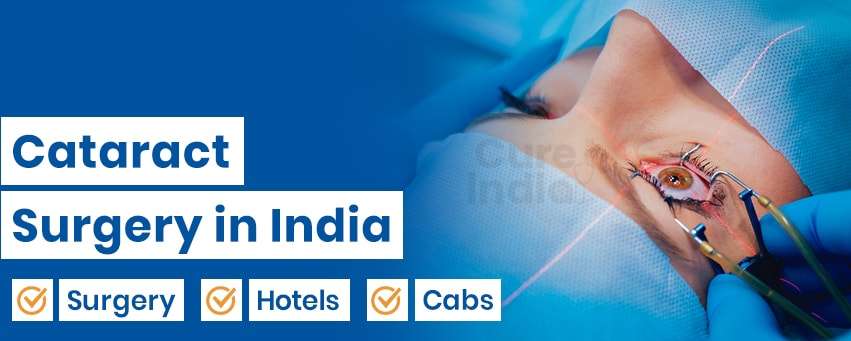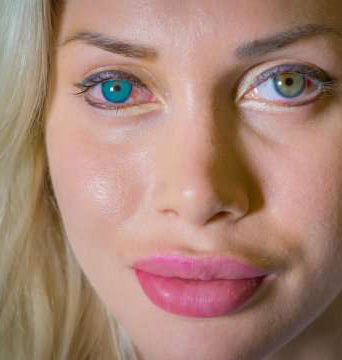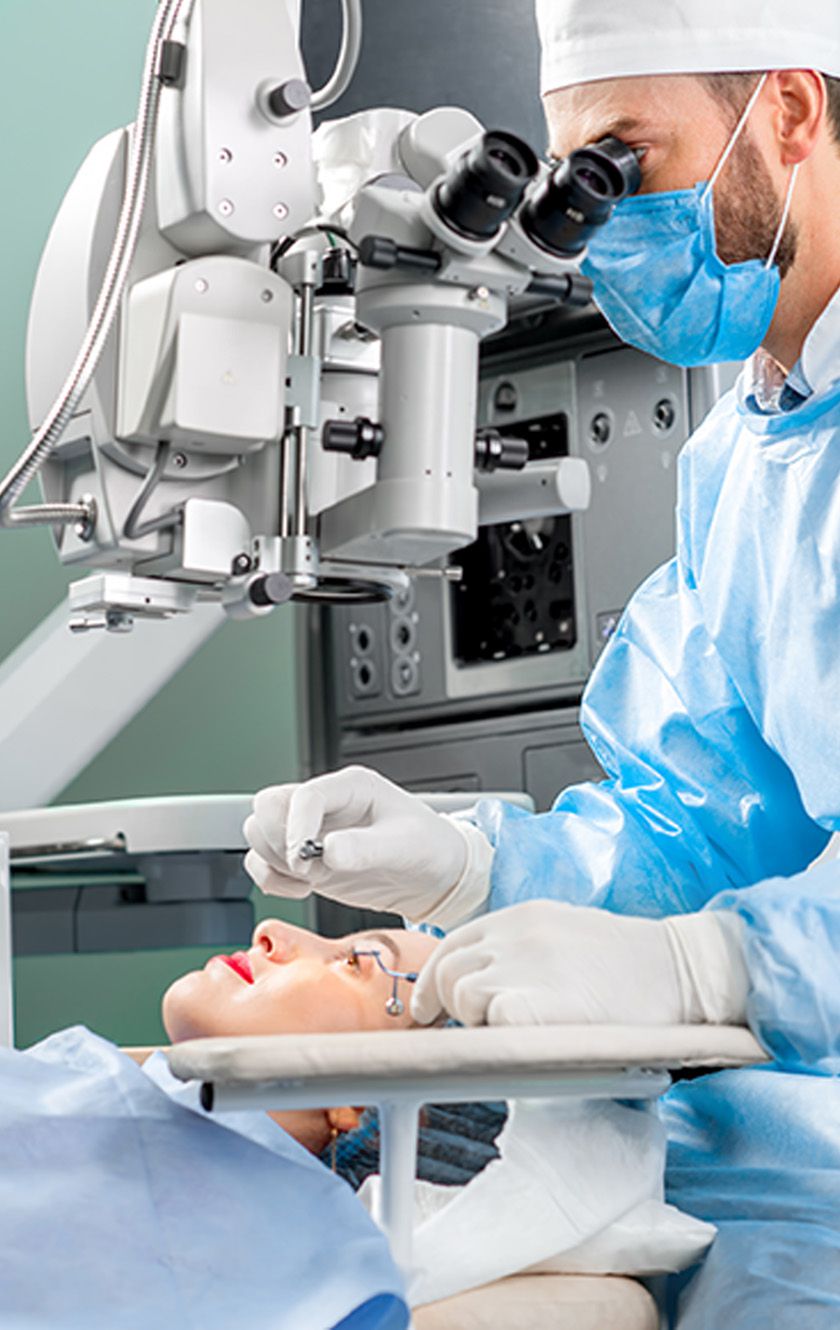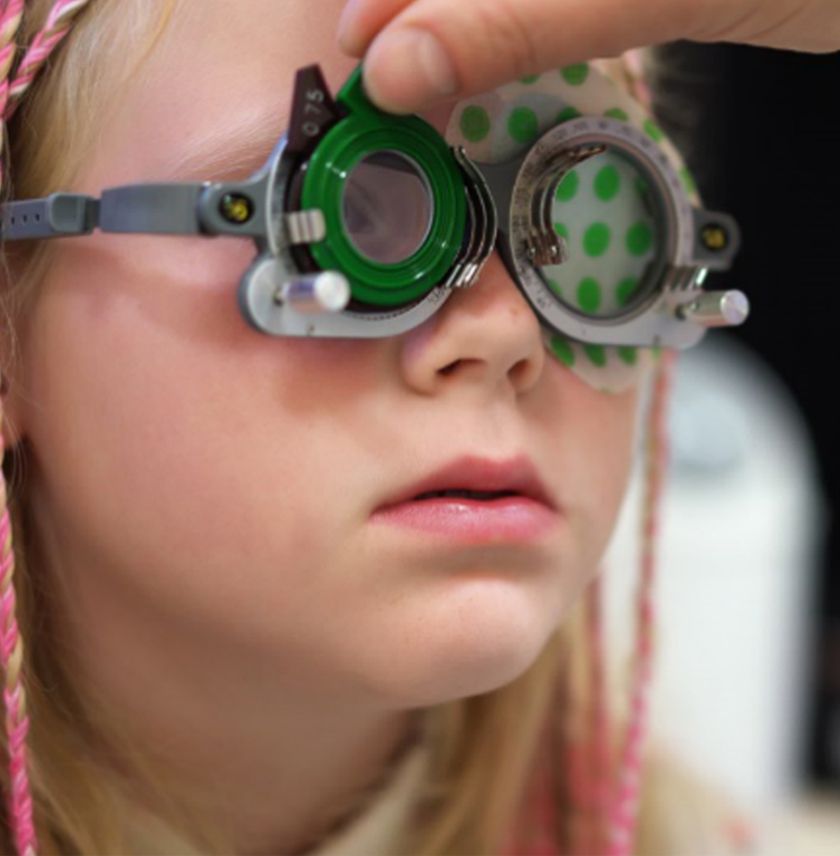

Our eyes are made up of different parts such as the cornea, conjunctiva, pupil, lens, etc. One of the eye parts is the lens, whose function is to transmit light and focus it on the retina. The lens is made up of proteins and water. When the protein in the lens starts to break down, it makes the lens become yellow and cloudy. Now this is what we call a cataract. It mostly affects elderly people, but it can also occur in any other people who have injuries or other medical conditions of the eye. When a person has a cataract, the light cannot pass properly through the lens, and hence the lens fails to transmit the light properly on the retina, and as a result, you will have blurred or cloudy vision. One option for that is cataract treatment in India. Cataract surgery is an eye surgery, which is very common these days. It removes the damaged lens and replaces it with a new artificial lens, which is known as an intraocular lens (IOL). This artificial lens is either made up of silicone, acrylic, or plastic material. Cataract surgery is the proven way of treating cataracts in adults, which restores vision without causing any complications.
According to the World Health Organisation, about 39 million people across the world are blind, and cataracts are a leading cause of blindness, especially in low and middle-income countries, including many African countries. With the increase in cataract cases in the world, surgical eye cataract treatment is insufficient in African nations due to insufficient OT (operating theatre) time, inexperience of the medical staff, inadequate healthcare resources, and shortage of eye surgeons. Due to this, many people from Africa are travelling to India every year for eye treatment. Cataract treatment in India is very cost-effective in India, and the success rate is high as this surgery is very common in India. The eye specialists in Indian hospitals are highly experienced and have many years of experience. Also, the eye hospitals in India have modern infrastructure and are equipped with advanced medical devices that aid in the success of the treatments.
There are many common and easy-to-notice symptoms of eye cataracts. As this disease directly affects the eyes and vision, you will have many symptoms related to vision problems. The most common symptom of cataracts is blurry or foggy vision. Some of the other common symptoms of eye cataracts are listed below.

People with cataracts may have the following symptoms:
A cataract is caused when the protein composition of the lens starts breaking down. As it breaks down, it creates a foggy appearance in the lens, which makes the lens unable to transmit the light properly onto the retina. As a result, a person with cataracts sees blurry and cloudy vision. There are many reasons why the lens protrudes down. The most common causes of eye cataracts are listed below.
There are various types of cataracts such as cortical cataracts, radiation cataracts, posterior subcapsular cataracts, traumatic cataracts, nuclear cataracts, brunescent spokes, cataracts, radiation cataracts, etc. Out of all these, the three are the most common ones, which are described below:

It is also known as posterior subcapsular cataracts (PSC). They occur on the back side of the lens. This type of cataract is common in people who have had eye surgery, eye trauma, elevated blood sugar levels, or who have been using steroids.
It is also known as nuclear sclerotic cataracts. This type of cataract occurs in the centre of the lens. It is the most common type of cataract that mostly affects people as they age. People who have this type of cataract will have their lens gradually turned hard (which is known as sclerosis) and yellow or brown over time.
This is a type of cataract that occurs on the outer layer of the lens. This type of cataract forms the white streaks known as cortical spokes which are clearly noticeable during its early stage, where it appears like small clouded areas or white streaks in the lens cortex. These cortical spokes block the light from passing through the lens, due to which a person may experience light sensitivity, glares, blurred vision, etc.
The doctor will recommend you get cataract treatment in India when your daily activities such as driving or reading are hampered by the loss of vision. Sometimes, when the eye has multiple problems including cataract, the cataract surgery is performed first before other eye problems are treated. In cataract surgery, the cloudy lens present in the eye is removed and replaced with an artificial and clear lens. This lens is known as intraocular lens (IOL).

Cataract surgery is the most commonly performed surgery which is mostly performed by two methods, namely, phacoemulsification and extracapsular surgery. Phacoemulsification is also known as small-incision cataract surgery in which a small opening is made in the eye and a probe is used to remove the diseased lens by suction and then replace it with the new lens. In extracapsular surgery, the surgeon makes a longer opening on the top part of the eye to remove the diseased lens and implant the new lens.
The surgeon starts the cataract treatment in India by first administering local anesthesia in order to make the surgical site numb so that the eye muscles relax and don’t move during the operation. As the anaesthesia starts kicking in and the area becomes numb, the eye surgeon begins by making a small incision in the cornea at the front. After the cut is made, the surgeon then inserts a small probe, which is a medical device that uses ultrasound waves to break the cataract and suck out the broken lens fragments.
The eye surgeon then inserts the artificial lens through the cut. The back of the lens, which is known as the lens capsule, is kept intact during the surgery to place the artificial lens. The surgeon will first fold the artificial lens, insert it through the small incision, and unfold it to put it in place. The small incision that was made to perform the surgery will be then closed with the tiny stitches. The entire cataract surgery procedure takes about 30 minutes. And patients can be discharged on the same day.
Besides phacoemulsification and extracapsular surgery, there are other cataract surgical types such as laser-assisted cataract surgery (LACS), femtosecond laser-assisted cataract surgery (FLACS), microincision cataract surgery (MICS), and small incision cataract surgery (SICS) available in India.

CureIndia is an online platform that helps people choose the right hospitals and top cataract surgeons in India for the different medical treatments that the patient needs. Most of the doctors and specialists in our associated hospitals are highly experienced and skilled personnel who have undergone rigorous training under international institutes. Most of the eye specialists in our association are active members of international medical councils and associations. Let’s hear from some of the most reputed and top cataract surgeons from India.
.jpg)
.jpg)
.jpg)

Many people from African countries like Ethiopia, Nigeria, an Kenya, travel seeking the best cataract treatment in India at minimum cost. As the cost of Cataract surgery in India is lowest in the globe, many people from other countries choose India for their eye treatment. Eye hospitals in India have the most modern equipment and medical devices, and the cost of cataract treatment in India is also very less. The surgeons in Indian eye hospitals are the best eye specialists and have many years of rigorous training and experience. Different types of Cataract treatments like ICCE, ECCE, phacoscopy, LACS, and Refractive Lens Exchange with Intraocular Lens Implants are available in Indian eye hospitals. The cost of cataract treatment in India is mentioned below.
| Treatment | Cost | Stay in India |
|---|---|---|
| Phaco Cataract Treatment in India | 1000 USD per eye | 5-7 days |
| Femto Cataract Treatment in India | 1500 USD per eye | 5-7 days |
After the cataract treatment in India, your vision will start to get better within a few days. Initially, you might see blurry, but as you heal and recover, your vision will be restored completely. You can expect to see the colours brighter than before, and your vision will be clearer than before. After the surgery, your surgeon will give you some instructions to follow and to avoid some activities for a few days after the surgery, such as:
Right after the surgery, it is normal to feel mild discomfort and mild itching for a couple of days post-surgery. However, avoid rubbing your eyes even if you feel an urge to itch. Also, you will need to wear an eye shield or a patch to protect the eyes for a few days. Your surgeon will recommend some medicines, including eye drops, which you need to put in your eye after the surgery for a few days. The eye drops are used to prevent the infection in the eyes, reduce the swelling, and control the eye pressure. You may get a follow-up appointment in which your surgeon will check your eye and see the progress of your vision. Feel free to ask any questions or queries to your surgeon during the appointments for your cataract treatment in India.
The cataract is a common eye problem nowadays in the whole world. Still, people are not receiving its treatment in many low-income countries due to a lack of resources, awareness, and a proper healthcare system. The inadequate healthcare system in these countries makes the people of their countries travel to other countries for treatment. There is no better country than India for the most affordable treatment, that too, with its world-class medical facilities and best cataract hospitals. The cataract treatment in India is of so high quality that a lot of people from around the world are choosing India for different medical treatments, including eye treatments.


Get the Eye color you've always dreamed of
Connect Today
Opt for successful eye color change surgery
Plan Surgery
Remove glasses with SMILE LASIK
Get Cost